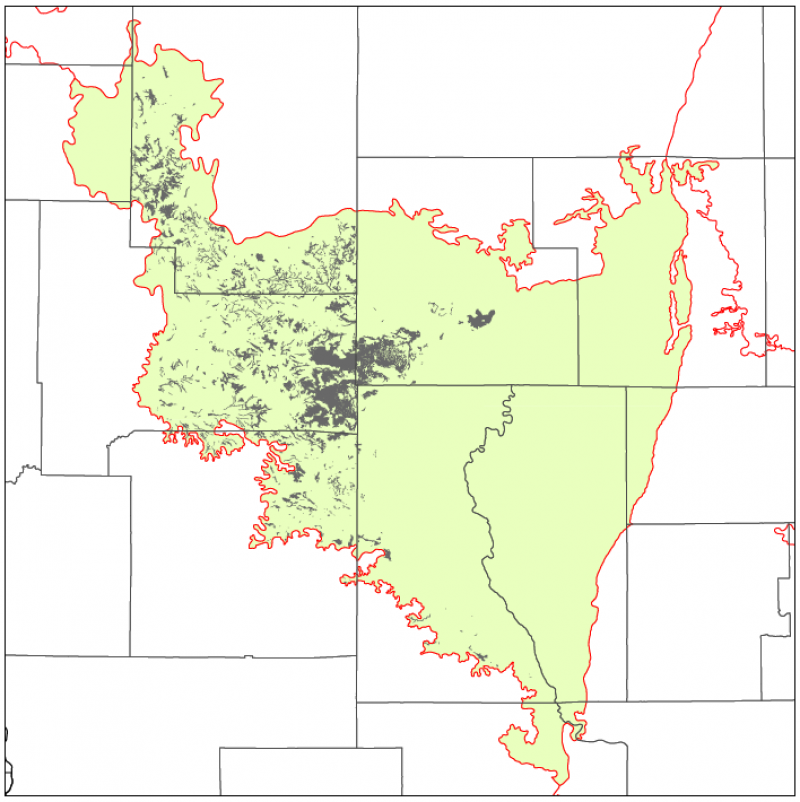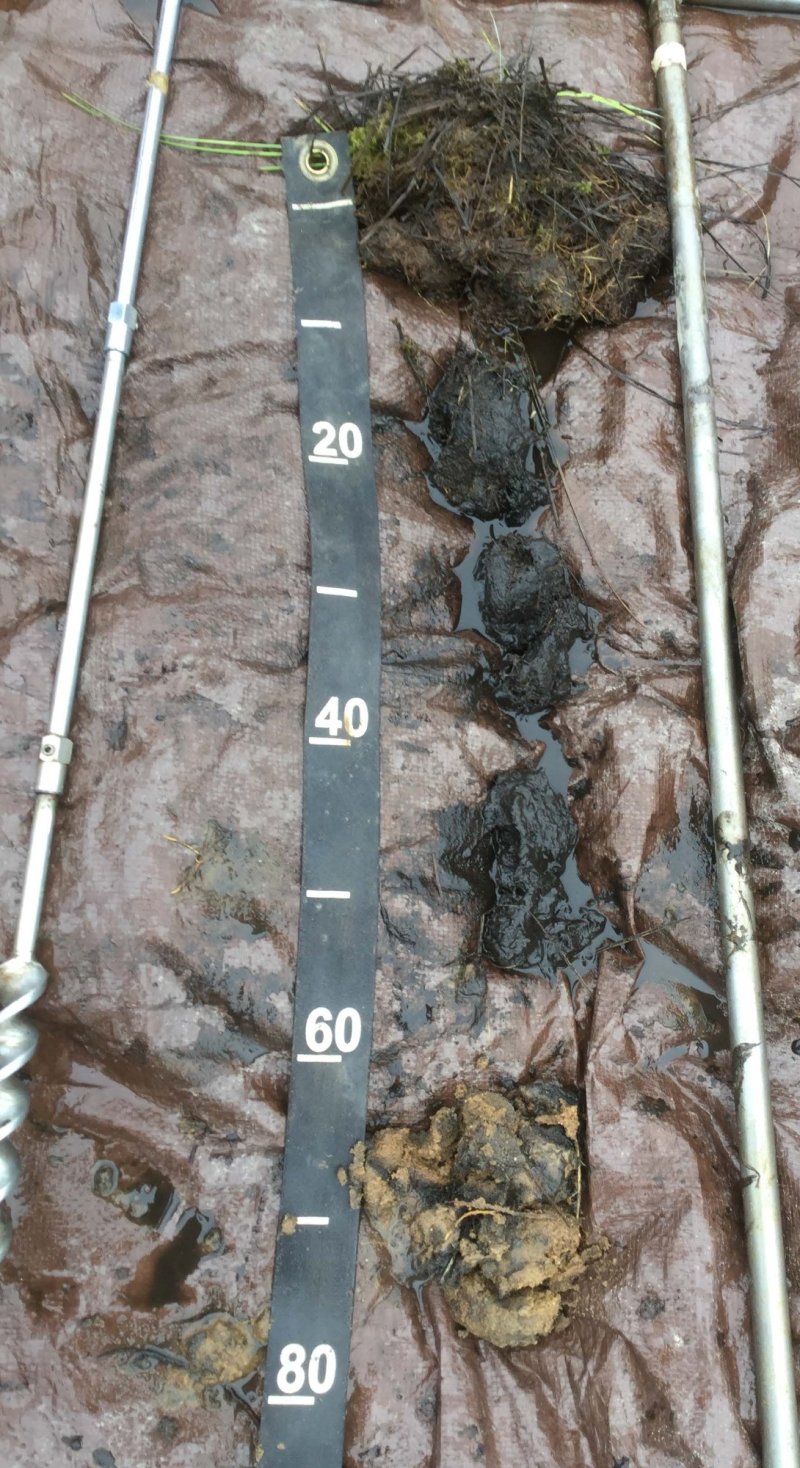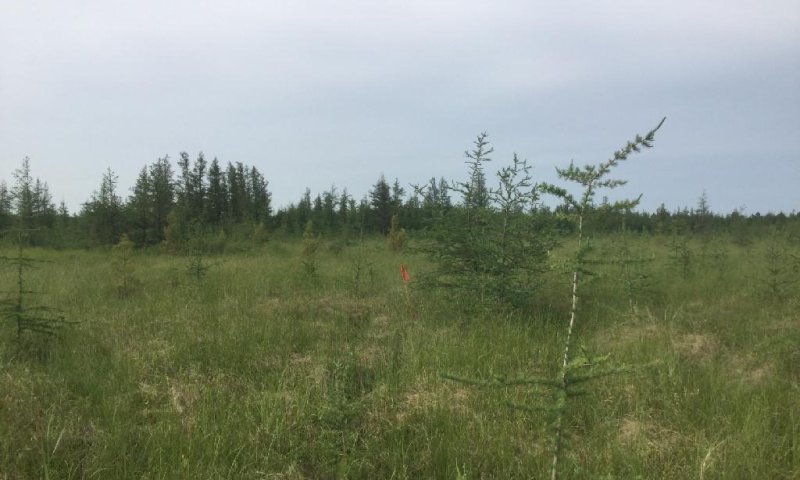

Natural Resources
Conservation Service
Ecological site F089XY001WI
Acidic Poor Fen
Last updated: 9/27/2023
Accessed: 04/26/2025
General information
Provisional. A provisional ecological site description has undergone quality control and quality assurance review. It contains a working state and transition model and enough information to identify the ecological site.
MLRA notes
Major Land Resource Area (MLRA): 089X–Wisconsin Central Sands
The Wisconsin Central Sands (MLRA 89) corresponds closely to Central Sand Plains Ecological Landscape published by the Wisconsin Department of Natural Resources (WDNR, 2015). Much of the following brief overview of this MLRA is borrowed from that publication.
The Wisconsin Central Sands MLRA is entirely in Wisconsin. The total land area is 2,187,100 acres (3,420 square miles, 8858 square kilometers). It is bordered to the east by Johnstown-Hancock end moraines, which were pushed to their extent by the west side of the Green Bay Lobe (Clayton & Attig, 1999). It is bordered to the southwest by highly eroded, unglaciated valleys and ridges. The dominant feature of this MLRA is the remarkably flat, sandy plain, composed of lacustrine deposits and outwash sand, that was once the main basin of Glacial Lake Wisconsin. It also features extensive pine and oak barrens and wetland complexes.
Glacial Lake Wisconsin was fed primarily by glacial meltwater from the north and east. The lake deposited silt overlain by tens of meters of sand (Clayton & Attig, 1989). The silty layers are closer to the surface in some areas, where they impede drainage and contribute to the formation of extensive wetland complexes. It is believed that Glacial Lake Wisconsin drained within several days after a breach in the ice dam that supported it. The catastrophic flood that followed flowed to the south and carved the scattered buttes and mesas protruding from the sandy plain in the southern portion of this MLRA. Before vegetation established after glacial recession, strong winds formed aeolian sand dunes that now support xeric pine and oak stands within the Wisconsin Central Sands.
The surface of the northwestern portion is mostly undulating. The sandy surface sediment was mostly deposited by meltwater during the Wisconsin glaciation. Gentle hills are a result of underlying bedrock topography. Valleys and floodplains are formed by stream action. The underlying bedrock controls the water table elevation and contributes to the formation of numerous wetlands.
Historically, the Wisconsin Central Sands were dominated by large wetland complexes, sand prairies, and oak forests, savannas, and barrens. Some pine and hemlock forests were found in the northwest portion. The Wisconsin Central Sands was subject to frequent fires, leading to today’s need for prescribed burns to maintain the area.
Classification relationships
Major Land Resource Area (MLRA): Wisconsin Central Sands (89)
USFS Subregions: Neillsville Sandstone Plateau (222Rb) and Central Wisconsin Sand Plain (222Ra)
Small sections occur in the Lincoln Formation Till Plain - Mixed Hardwoods (212Qb) and Central Wisconsin Sand Plain (222Ra) Subregions
Ecological Landscapes of Wisconsin (WDNR, 2015): Central Sand Plains
Relationship to Established Framework and Classification Systems:
The Wetland Forest Habitat Type Classification System for Northern Wisconsin (Kotar and Burger, 2017). In the absence of a wetland forest habitat type classification system for Southern Wisconsin, we have utilized the information for the adjacent Habitat Type Region 5, in this publication. The study sites of ES1 keyed out to two wetland forest habitat types: PArGy (Pinus strobus-Acer rubrum/Gaylussacia) and PmLLe-An (Picea mariana-Larix/Ledum, Aronia variant).
Biophysical Settings (Landfire, 2014): This site is largely mapped as Boreal Acidic Peatland Forest, Boreal Acidic Peatland Shrubland, Laurentian Shrubland Barrens, and Central Interior and Appalachian Swamp Forest.
WDNR Natural Communities (WDNR, 2015): This ES is most similar to Central Poor Fen and Sedge Meadow.
Ecological site concept
The Acidic Poor Fen ecological site is found in poor fens on outwash plains and pediments in the west-central portion of MLRA 89. These sites occur where adjacent parent materials are sandy. They are characterized by very poorly drained soils that have formed in moderate to deep organic materials of herbaceous origin. Some sites are underlain by sandy outwash material or bedrock. The sites receive water primarily through precipitation and runoff from adjacent uplands that tend to be sandy and acidic. The input from stream or groundwater flow is limited. The soils remain saturated throughout the year and meet hydric-soil criteria. The water levels are strongly influenced by precipitation and runoff and soil reaction ranges from very strongly acid to extremely acid.
These conditions negatively affect plant growth and distinguish Poor Fen from the Mucky Swamps ecological site. The main distinguishing characteristic is the strong presence of sphagnum mosses, indicating a long-term transition of this Ecological Site from Fen to Bog. In addition to Sphagnum species, characteristic ground-layer plants include swamp dewberry (Rubus hispidus), marsh marigold (Caltha palustris), steeplebush (Spirea tomentosa) and wild cranberry (Vaccinium macrocarpon). The ES can be wooded, or unwooded, or some of both. The most common shrubs are speckled alder (Alnus crispa), bog birch (Betula pumila) and currants (Ribes spp.). Typical early colonizing trees are paper birch (B. Papyrifera), tamarack (Larix laricina), jack pine (P. banksiana) and white pine (P. strobus).
Associated sites
| F089XY017WI |
Sandy Outwash Uplands Sandy Outwash Uplands primarily consist of deep sandy outwash deposits. Soils are somewhat excessively to excessively drained and are primarily found east of the Yellow River. They are much drier and occur higher on the drainage sequence than Acidic Poor Fens. |
|---|---|
| F089XY006WI |
Wet Sandy Outwash Lowlands Wet Sandy Outwash Lowlands consist of deep sandy deposits derived from a mixture of outwash, alluvium, and lacustrine sources. They are very poorly to poorly drained, remain saturated for much of the growing season, and are subject to frequent ponding. They are drier and occur higher on the drainage sequence than Acidic Poor Fens. |
Similar sites
| F089XY002WI |
Mucky Swamps Mucky Swamps sites consist of herbaceous organic materials sometimes underlain by sandy to loamy mineral soil. They are very poorly drained and remain saturated throughout much of the year. Like Acidic Poor Fens, these sites are permanently saturated wetland. These sites receive more stream and groundwater and the parent materials of adjacent upland sites are more calcareous, resulting in more alkaline wetlands with improved growing conditions. |
|---|
Table 1. Dominant plant species
| Tree |
(1) Picea mariana |
|---|---|
| Shrub |
Not specified |
| Herbaceous |
(1) Sphagnum |
Click on box and path labels to scroll to the respective text.
Ecosystem states
State 1 submodel, plant communities
| 1.1A | - | Periodic small-scale canopy disturbances provide adequate light for regeneration of canopy species, thus perpetuating the existing community. |
|---|---|---|
| 1.1C | - | Large-scale canopy disturbance, mortality in canopy layer. |
| 1.2A | - | Slow accumulation of living and dead sphagnum moss layer, dominance of tree species. |
| 1.2B | - | Large-scale natural disturbance or tree harvesting, causing swamping of the site. |
| 1.1B | - | Colonization by trees with tolerance for prolonged ponding. |




